The conventional flashlight LED emits white light, but multi-color LED units are making headway into the market.
Many people assume these colored lights are for aesthetic purposes or just for fun.
However, these units have specific functions, with each color light having a distinct meaning.
We will look at these different colored flashlights to demystify their purpose. Let’s get right into it!
What Are Colored Flashlights?
Colored flashlights are light sources for specialized tasks in dark or low-light conditions.
Some units can produce a single hue, while others have an all-in-one color flashlight design that emits multiple colors.
Also, some use colored lenses above a white LED, while others are actual color LED flashlights.
Although the functions of both varieties are generally the same, colored lenses filter the amount of light leaving the flashlight, which results in low lumen output.
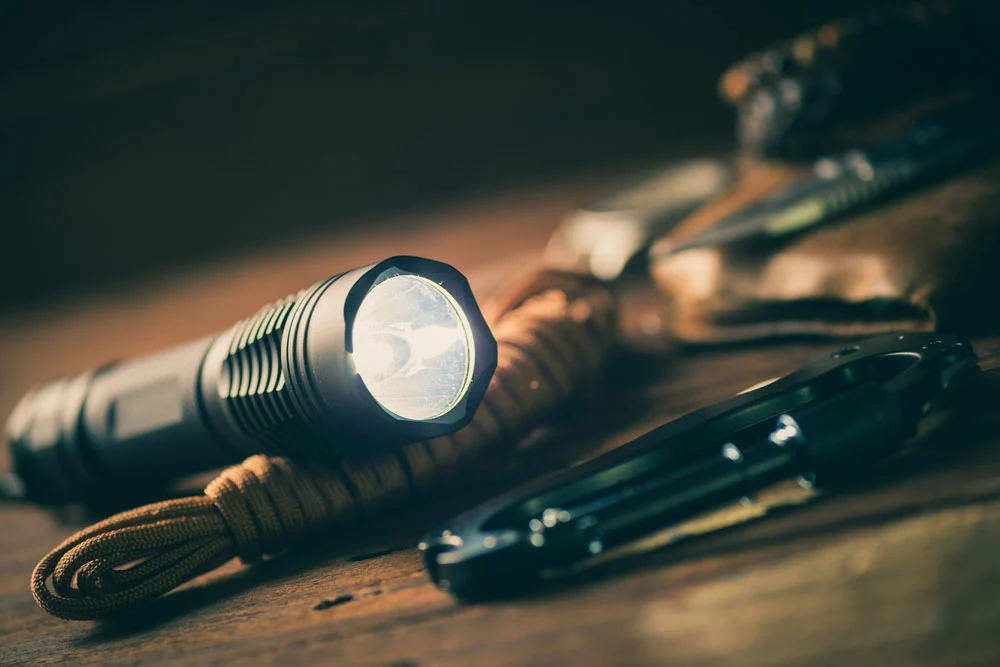
An LED flashlight
But LEDs can emit colored light directly from the flashlight, eliminating the need for lenses or filters. So they have become more powerful.
Also, LEDs are brighter than other light sources, so the flashlights can still have a high lumen output even with a colored lens.
Understanding Flashlight Beam Colors
The most typical flashlight colors include the following.
Red (630 nm)
Red light is gentler to the human eye than white light. So it does not appear as bright as white light, making it ideal for illuminating an area without ruining your night vision.
Therefore, if your eyes have adapted to night vision, such as when hunting, you should use a red flashlight.
The color is also ideal for night fishing, map reading in the dark, night hiking, and walking around a campsite without causing white light pollution that might wake people up.
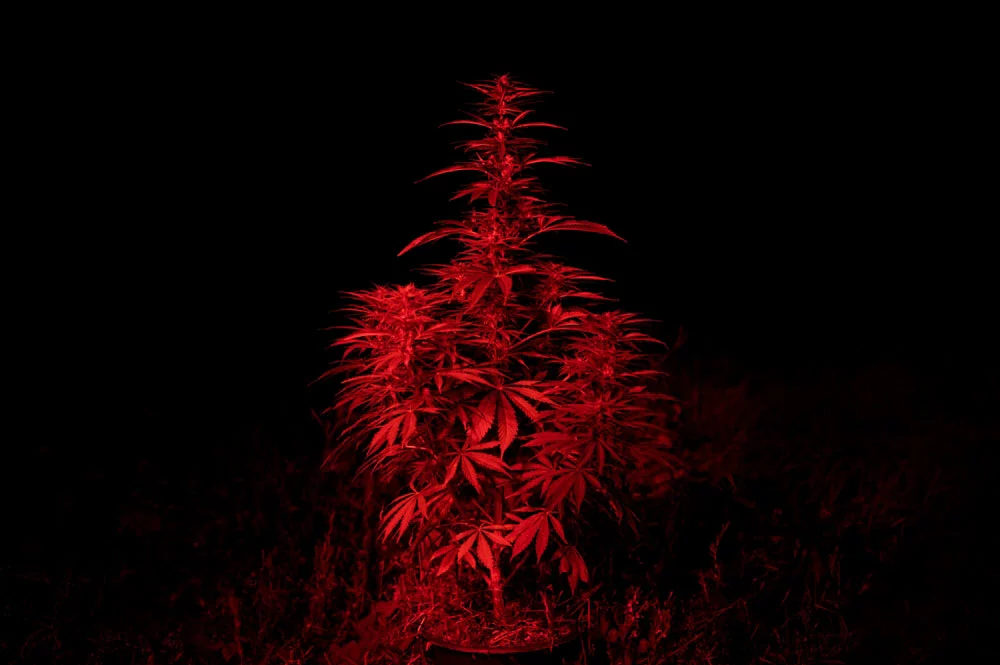
Red light illuminating a cannabis plant outdoors.
However, shadows tend to deepen with red lighting. So walk with caution when using a red flashlight to avoid hitting obstacles.
Also, red light is a universal distress signal.
Therefore, keeping a red flashlight on for a prolonged period in an isolated area might not be a good idea unless you need help or rescue.
Blue (470 nm)
Blue light also does not damage night vision. And it is better for reading maps at night than red light because it doesn’t wash out the red lines.
Additionally, it casts black lines on white paper, making the map more visible.
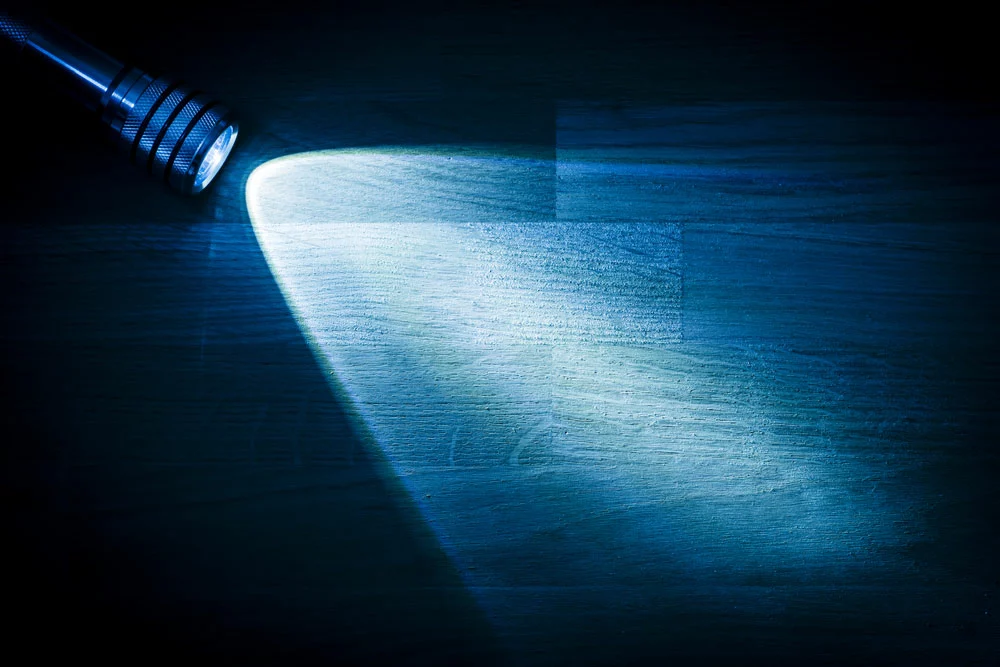
A blue flashlight
More importantly, blue light makes blood and bodily fluids like semen visible. So crime scene investigators and police officers regularly use them in their work.
This benefit also makes blue light vital for hunting because it can highlight blood trails along paths and foliage.
Another unique feature of blue light is that it is the only light color that can penetrate through the fog. Therefore, it is typical in most headlights or fog lamps.
Green (525 nm)
Greenlight does not give the full night vision range as red or blue light. However, it does not signal for rescue accidentally, giving you an edge when night hunting, and you need to fill those tags.
Also, green light LEDs have a longer runtime than the other colors. So you can hunt for longer using the same batteries.
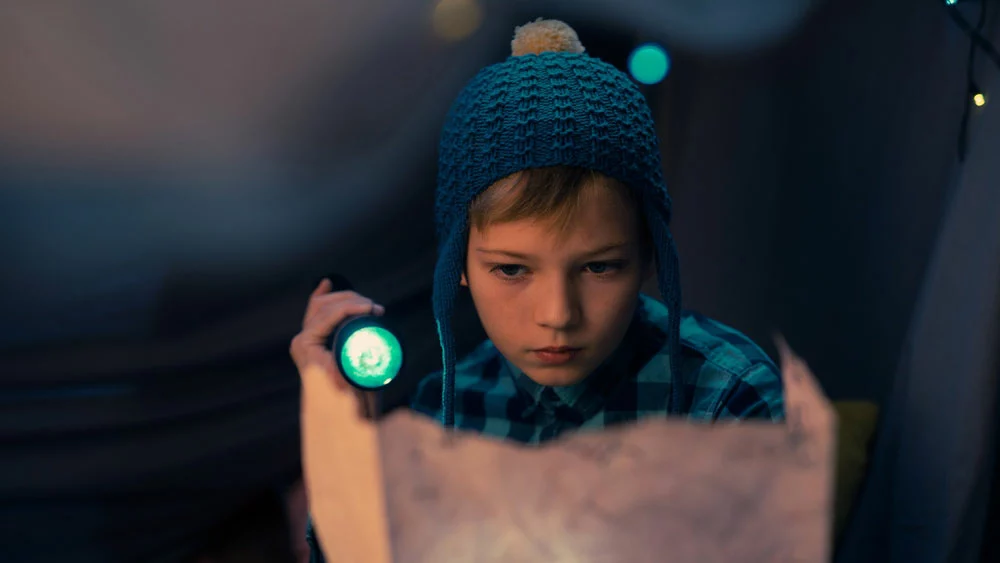
A kid using green light to read a treasure map
And most hunters claim green light does not scare or alarm fish, deer, and other animals.
Add the fact that animals cannot see a green beam when looking at it straight on, and you get the perfect hunting light.
A green beam is only visible from the side, making it a stealthy hunting light for tactical flashlights.
Night Vision Green (495 nm)
Combined with red LEDs, night vision green is ideal for preserving visibility at night. Such night vision devices are suitable for military applications.
White
White light has one primary advantage; brightness.
These LEDs are the brightest of all the available colors and are the most common in regular flashlights for everyday use.
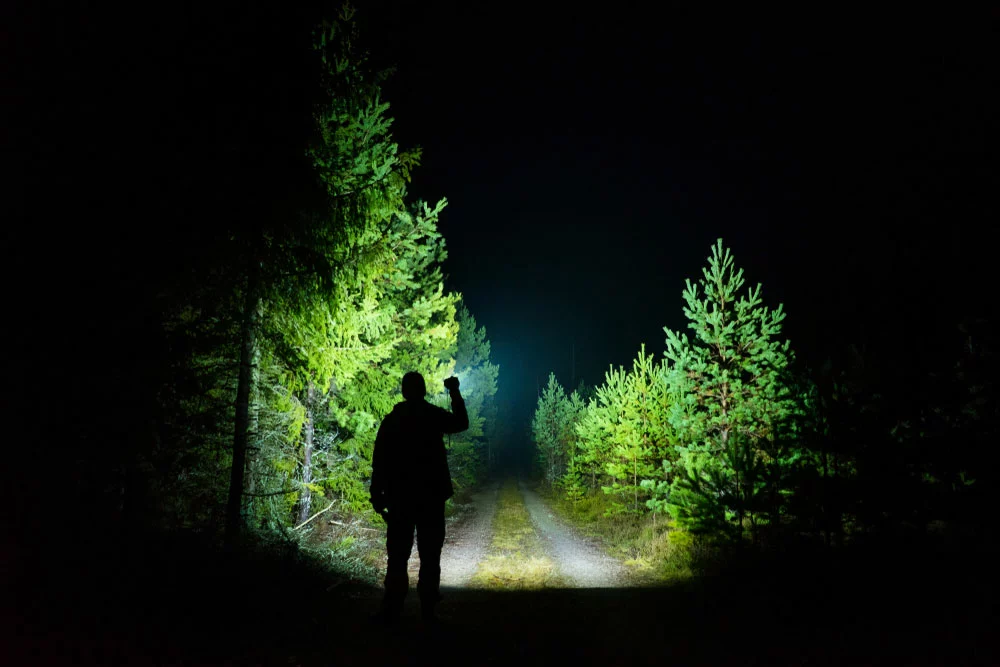
A man using a white light flashlight to illuminate a path
UV/Purple (365-400 nm)
Also known as black light, UV light makes lighter colors look like they are glowing in the dark.
This ability gives them multiple applications, such as authenticating driver’s licenses, money, and other documents with security watermark features.
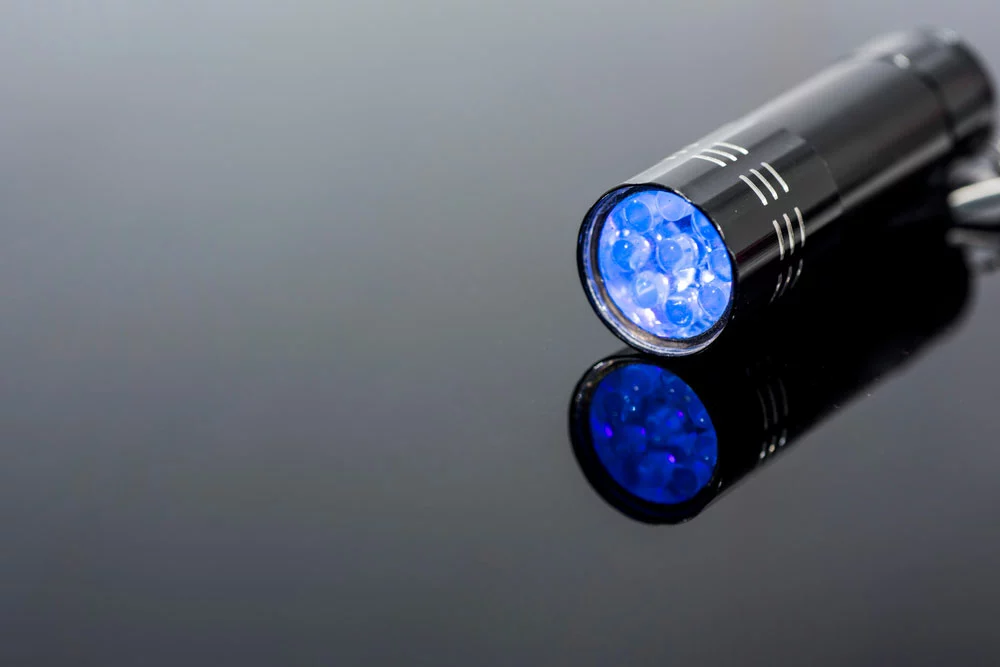
A UV flashlight
Also, it makes bodily fluids and blood glow, making it better than blue light for crime scene investigations. Pet and other animal stains fluoresce under this light, as well.
And scorpions turn green under UV light, making them easy to find.
Mechanics can use ultraviolet light to detect HVAC leaks because the fluids fluoresce under the light.
Different minerals also glow at varying wavelengths. So you can use the black light in mineralogy.
But UV light is harmful to the human eye. Avoid looking at it directly.
Yellow (580 nm)
Yellow is the traditional headlight beam color because it creates a powerful projection. It can form a concentrated beam up to 30 feet out, creating a superb vision for night driving.
Also, it is ideal for emergency kits required for bright lighting.
However, the light color can disturb your night vision because it takes time for your eyes to adjust.
IR (750-1000 nm)
Infrared light is invisible to the human eye, so it will not give out your position in tactical situations.
Therefore, IR flashlights are ideal for tracking or hunting in the dark.
And they illuminate the subject while remaining invisible under normal light.
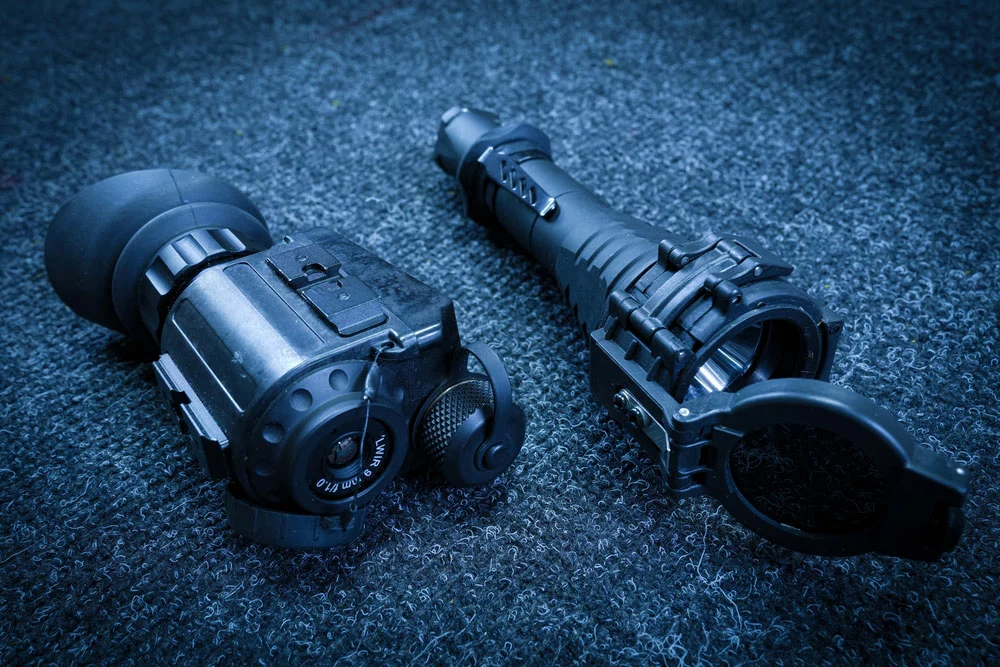
A night vision monocular and an infrared flashlight
3 Best Colored Flashlights
Here are a few flashlight options to consider.
UltraFire Tactical LED Flashlight
Red and green light colors provide night vision in tactical situations, and this flashlight gives these options for outdoor hunting.
However, it does not have colored LEDs but features changeable red and green glass lenses for different activities and environments.
Therefore, you can also use the base LED white light for general lighting.
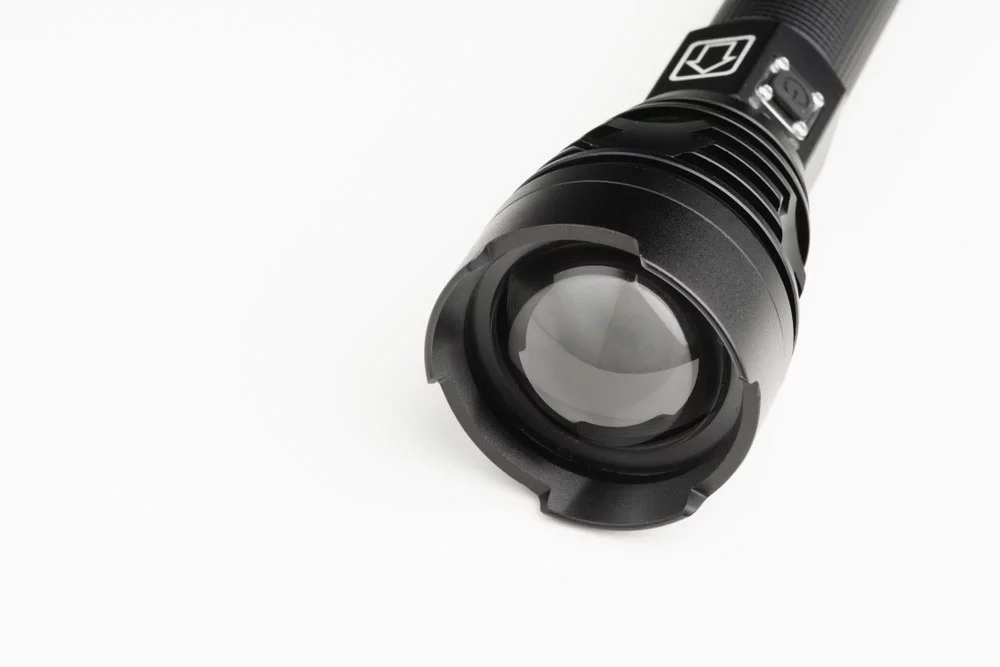
A black pocket flashlight
The torch emits white light at 800 lumens, which lowers to 300 lumens for red and green light due to the filters.
Flashlight modes with each of these colors include high, medium, low, strobe, and SOS.
A rugged, heavy-duty, rain-resistant design with a magnetic tail makes the unit ideal for camping, hunting, and other outdoor activities.
The flashlight runs on one 18650 rechargeable battery or three CR123A AAA batteries.
Godox C80 Multifunction Flashlight
Godox’s C80 also uses lenses to vary its light options. However, it has a clever way of doing so, which is by rotating the head.
This rotation gives you white, yellow, red, and blue color options with three flashlight modes: high, low, and flash.
The durable flashlight features an aluminum alloy case with corrosion and scratch resistance. This metal flashlight is also weatherproof. So you can use it without fear of water damage.
It runs on the same 18650 battery as the UltraFire flashlight or three AAA batteries.
LingsFire Hat Handheld Flashlight
With a luminous flux of 2000 lumens, LingsFire Hat is one of the brightest flashlights. It is a tri-color unit with white, red, and green lighting. And it features a zooming function for tactical use.
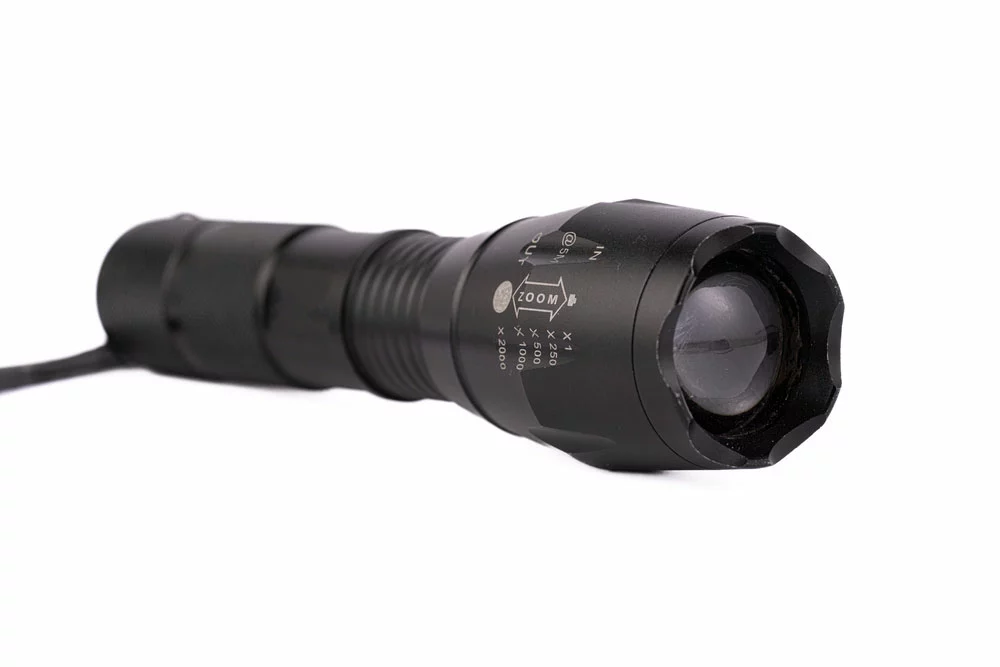
A tactical flashlight with a zooming function
Also, it has five flashlight modes for all light colors, which include high, medium, low, strobe, and SOS.
Wrap Up
In conclusion, colored-light flashlights have multiple advantages over normal flashlights because each color has specific functions. And as you can see above, combining them into a single unit makes the flashlight more practical for daily use, hunting, night-time use, etc.
We hope this article has been insightful. Contact us if you need help or think we left something out.
